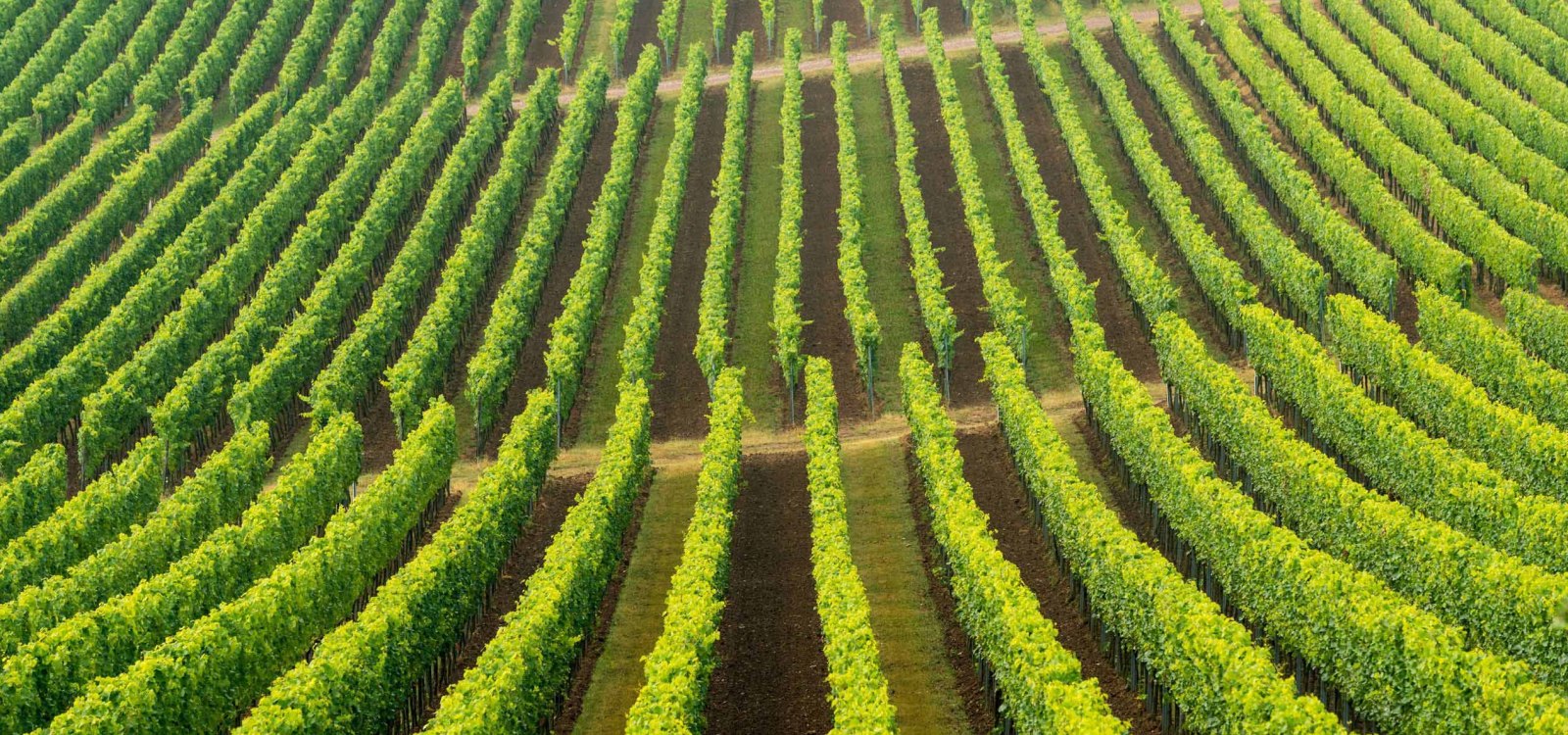
searchMenu



Riesling - Powerful and precise like a bird of prey Buzzard, hawk or sparrowhawk: birds of prey lie in wait for their prey and strike with lightning speed. In the Middle Ages, they were known as "vultures" (from the Middle High German gīr). Presumably, the location in Dittelheim is called so because of the large number of these birds. The "Geiersberg" is located at the foothills of the Kloppberg. The vines stand on deep, calcareous clay marl - rich in calcium, potassium and magnesium. In the glass, the wines reflect powerful minerality.…

Rieslings at lofty heights and with chalky soil With up to 280 metres above sea level, this site is one of the highest in Rheinhessen. It also faces east/northeast - a highly interesting site in the wake of climate change. On heavy clay marl "Pelosol" soils with fine limestone inlay, mainly Rieslings thrive here. Cool evening winds are ideal for the "grande dame" of grape varieties. Wines with a distinctive acidity and minerality, depth and elegance are produced. The name "Klopp" first appeared in documents in 1537. The name goes back to the…

Oh, how delicious, this vineyard, these wines! One of the most melodious vineyards in Rheinhessen - and no one really knows where the name comes from! The Middle High German word "lecken" is derived from the Old High German "lecchōn" and refers to something particularly tasty. Does it refer to the tasyts wines? The salt licks for game? Or something completely different? The vineyard was first documented in 1562 with the name "im Leckerberg". The vines grow on terraced slopes above the village on a wide variety of soils such as chalky…

Simple wayside cross with view towards Petersberg The single site runs west of the village, in the direction of Petersberg. It was mentioned in a document in 1501 with the name "am Crutzeberge". The site designation is based on an old field cross. A "Flur" is a delimited piece of land, thus an area designation. In former times one also spoke of "Flurnamen", quasi a similar counterpart to today's site designations. There is still a cross on the Kreuzberg today, but it is a classic, simple wayside cross. A bench invites you to rest. Different…

Of prehistoric horses, saber-toothed tigers and hares The hare gave its name to the single location. Moreover, the Middle High German word "spring/sprung", which has nothing to do with hopping, but means "spring". Hare, deer, fox, badger certainly roam the area between the three villages Dorn-Dürkheim, Wintersheim and Hillesheim. And yet there were once quite wondrous animals here: prehistoric horses, rhinoceroses or saber-toothed tigers. The found remains of 80 vertebrate species are about 8.5 million years old and thus belong to…

Peace cross, fruit trees and heat-loving vines This single vineyard is located east of Bingen-Dromersheim, on the western flank of the Jakobsberg. At the top of the mountain: a pilgrimage monastery with a history dating back over 300 years and still inhabited by monks. The Klosterweg is a direct pedestrian link between the village and the monastery. Hikers and mountain bikers will find beautiful resting places with a view, including one stop at the peace cross. Fruit trees flank the paths. The name of the single vineyard was first coined in…
Rheinhessenwein e.V.
Otto-Lilienthal-Straße 4
55232 Alzey
E-Mail: info@rheinhessenwein.deRheinhessenwein e.V.
Otto-Lilienthal-Straße 4
55232 Alzey
E-Mail: info@rheinhessenwein.de